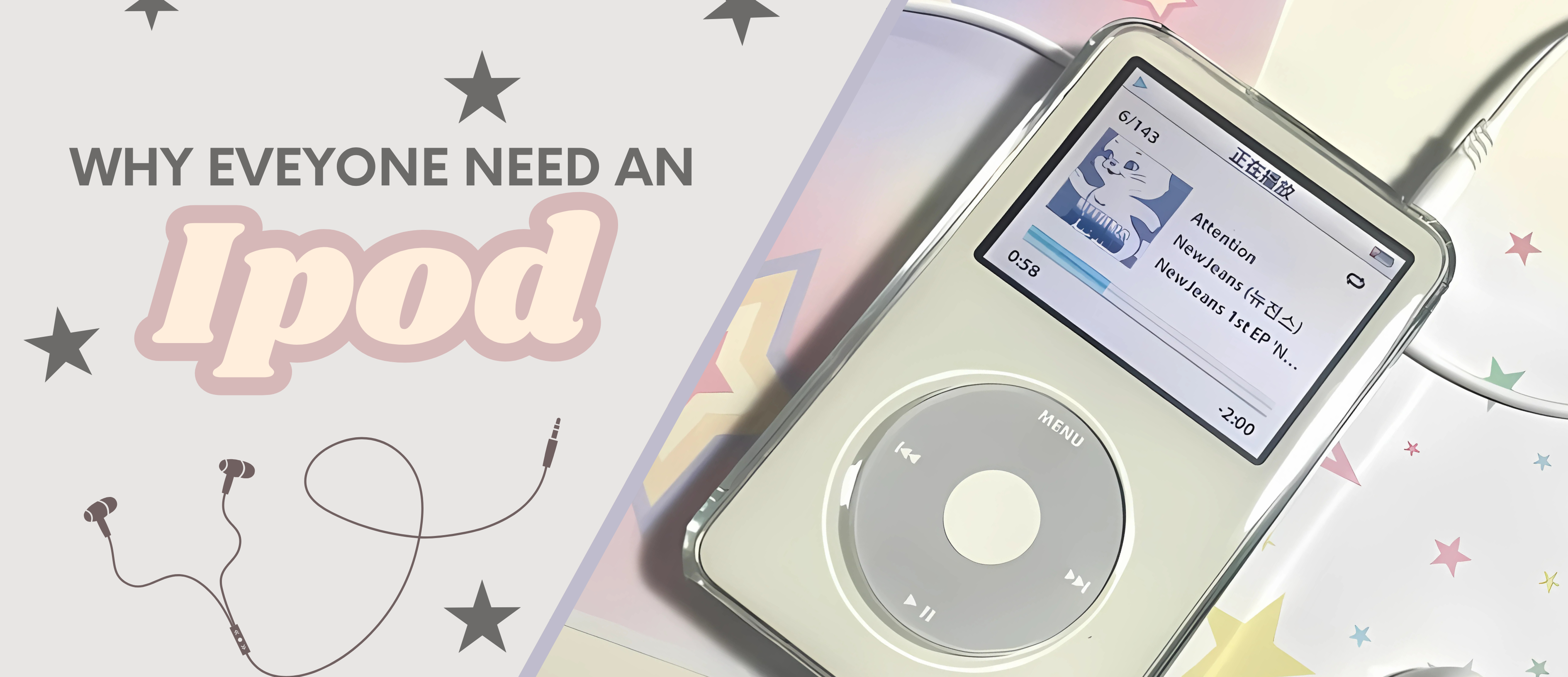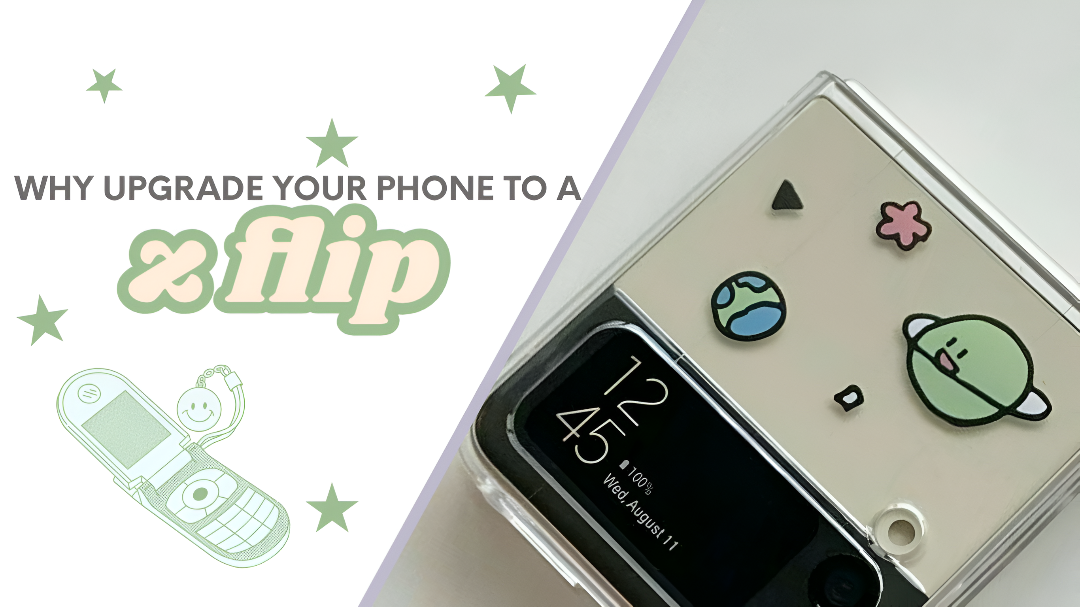Why eveyone need an ipod?
Why have ipods become so popular in 2025? What made everyone want one? Find out here.

In the year 2025, in a world dominated by artificial intelligence, ultra-powerful
smartphones, and unlimited streaming services, something unexpected has happened: the iPod Classic is back,
not just as a collector's item, but as a highly coveted device for young people, nostalgic people, and
audiophiles alike.
This return is no coincidence. Many users are looking to disconnect from the constant barrage of
notifications, algorithms, and social media. The iPod Classic offers just that: an experience focused
exclusively on music, without distractions or interruptions. Listening to songs from an iPod doesn't just feel
different; it feels different.
Furthermore, the rise of the Y2K aesthetic and retro fashion have turned the iPod into a symbol of style.
Influencers and TikTok users showcase it as a vintage accessory that evokes memories of a simpler era, when
music was carefully curated and each album was valued. Its design, featuring the classic "click wheel," and
monochrome display are now considered timeless design icons.
Another key factor in its resurgence is sound quality. Unlike current smartphones, many iPod Classic models
have dedicated audio components, which significantly improves the listening experience. Furthermore, there is
an entire community dedicated to modifying and updating these devices: replacing hard drives with flash
drives, integrating Bluetooth, new batteries, and even USB-C ports. Thus, the iPod is revived with a blend of
nostalgia and modern technology.
Finally, there is a shift in mentality among young people: they now value **ownership** of their music more.
Tired of losing songs due to expired licenses on streaming platforms, many have returned to buying records,
downloading MP3s, and creating their own personal music libraries.
In short, the iPod Classic has returned not only as a memory of the past, but as a contemporary response to
the digital noise of the present. Its simplicity, quality, and retro charm have made it, once again, a musical
treasure that everyone wants to get their hands on.
_____________
Why upgrade your phone to a samsung z flip?
The new generations aren't content with anything. They're looking for something different, something
practical, something that's on-trend. Are you ready to discover the smartphone that has it all?

In a world where technology is advancing by leaps and bounds and personal style matters more
than ever, the Galaxy Z Flip isn't just a phone: it's a statement.
New generations don't want the same old thing. They want something different, versatile, modern, and with
personality. The Z Flip delivers on all that and more. Its foldable design makes it the perfect balance
between practicality and cool: it fits in any pocket, yet opens to a large, bright, and stunning screen.
Plus, you don't need extra accessories to record or take photos: Flex Mode lets you place the phone on any
surface and record yourself hands-free, as if you had an invisible tripod. Ideal for TikToks, well-lit
selfies, or hassle-free video calls.
But it's not all about style: the Z Flip is packed with real power. It has high-end cameras, smooth
performance, and a smart external display that lets you reply to messages, change songs, or view notifications
without even opening it.
This generation doesn't wait. They don't settle. So, if you're going to use your phone for everything—taking
photos, studying, working, creating content, or just showing off your style—**do it with something that's up
to you**.
The Z Flip isn't the future. It's the present for those who are ready to stand out.
This return is no coincidence. Many users are looking to disconnect from the constant barrage of
notifications, algorithms, and social media. The iPod Classic offers just that: an experience focused
exclusively on music, without distractions or interruptions. Listening to songs from an iPod doesn't just feel
different; it feels different.
Furthermore, the rise of the Y2K aesthetic and retro fashion have turned the iPod into a symbol of style.
Influencers and TikTok users showcase it as a vintage accessory that evokes memories of a simpler era, when
music was carefully curated and each album was valued. Its design, featuring the classic "click wheel," and
monochrome display are now considered timeless design icons.
Another key factor in its resurgence is sound quality. Unlike current smartphones, many iPod Classic models
have dedicated audio components, which significantly improves the listening experience. Furthermore, there is
an entire community dedicated to modifying and updating these devices: replacing hard drives with flash
drives, integrating Bluetooth, new batteries, and even USB-C ports. Thus, the iPod is revived with a blend of
nostalgia and modern technology.
Finally, there is a shift in mentality among young people: they now value **ownership** of their music more.
Tired of losing songs due to expired licenses on streaming platforms, many have returned to buying records,
downloading MP3s, and creating their own personal music libraries.
In short, the iPod Classic has returned not only as a memory of the past, but as a contemporary response to
the digital noise of the present. Its simplicity, quality, and retro charm have made it, once again, a musical
treasure that everyone wants to get their hands on.
Why an old camara instead of a new one?
As the world races after the latest technology, some are looking back… and finding something more real.

In an age where new cameras appear every year with more megapixels, better sensors,
ultra-fast autofocus, and advanced connectivity options, it may seem strange that more and more people prefer
to buy an old camera over a modern one. But behind that decision lies much more than nostalgia: it's a quest
to reconnect with the essence of photography. Old cameras, whether digital from the 2000s or analog models
from decades past, offer a completely different experience. Instead of relying on a machine that does
everything for you, these cameras invite you to think, observe, and wait. They teach you to look, to
calculate, to fail, and to value every shot. While new cameras offer instant perfection, older ones offer
character, history, and a unique aesthetic that is difficult to replicate today. A new camera can produce a
flawless image, but often that image feels empty, too clean, too similar to the others. In contrast, a photo
taken with an old camera has texture, emotion, and small imperfections that make it more real, more alive. And
it's not just about the visual result, but the process. Using an old camera is almost a ritual. From the
weight of the body, to the sound of the shutter, to the way it forces you to stop and observe before shooting.
There's something deeply human about that. Plus, economically speaking, many older cameras are surprisingly
affordable and still capable of delivering excellent results. Compact digital models like the Canon PowerShot,
Sony Cyber-shot, or Nikon Coolpix from the early 2000s are enjoying a second wave not only because they're
cheap, but because they offer a highly sought-after aesthetic today: the raw, real, unedited style, perfect
for social media that wants to escape the artificial look. In the case of analog cameras, the value is even in
the wait. You can't see the photo instantly. You have to wait to develop it, and that makes the memory more
precious. Each roll of film is a story, a surprise, a little time capsule. And while modern cameras are packed
with features, they often distance us from the true meaning of photography: capturing something that truly
matters. Old cameras, on the other hand, don't distract with endless menus or complicated options. Just you,
the light, and the moment. In a world that moves ever faster, choosing a vintage camera is a way to slow down.
It's a way of saying, "I want to look again, I want to feel what I capture." Because, although technology
advances, there are things that can't be measured in resolutions or technical specifications. Sometimes, what
is most valuable is what forces us to stop, look, and shoot with intention. That's why buying a vintage camera
isn't a step backward, but a conscious decision. It's choosing a more honest, intimate, and creative way to
capture life.



